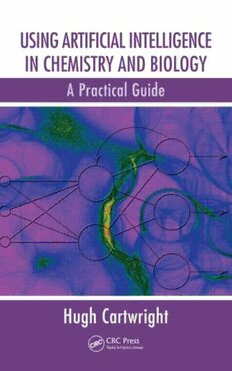
Using Artificial Intelligence in Chemistry and Biology: A Practical Guide (Chapman & Hall/Crc Research No) PDF
358 Pages·2008·7.876 MB·English
Most books are stored in the elastic cloud where traffic is expensive. For this reason, we have a limit on daily download.
Preview Using Artificial Intelligence in Chemistry and Biology: A Practical Guide (Chapman & Hall/Crc Research No)
Description:
Possessing great potential power for gathering and managing data in chemistry, biology, and other sciences, Artificial Intelligence (AI) methods are prompting increased exploration into the most effective areas for implementation. A comprehensive resource documenting the current state-of-the-science and future directions of the field is required to furnish the working experimental scientist and newcomer alike with the background necessary to utilize these methods. In response to the growing interest in the potential scientific applications of AI, Using Artificial Intelligence in Chemistry and Biology explains in a lucid, straightforward manner how these methods are used by scientists and what can be accomplished with them. Designed for those with no prior knowledge of AI, computer science, or programming, this book efficiently and quickly takes you to the point at which meaningful scientific applications can be investigated. The approach throughout is practical and direct, employing figures and illustrations to add clarity and humor to the topics at hand. Unique in scope, addressing the needs of scientists across a range of disciplines, this book provides both a broad overview and a detailed introduction to each of the techniques discussed. Chapters include an introduction to artificial intelligence, artificial neural networks, self-organizing maps, growing cell structures, evolutionary algorithms, cellular automata, expert systems, fuzzy logic, learning classifier systems, and evolvable developmental systems. The book also comes with a CD containing a complete version of the EJS software with which most of the calculations were accomplished. Encouraging a broader application of AI methods, this seminal work gives software designers a clearer picture of how scientists use AI and how to address those needs, and provides chemists, biologists, physicists, and others with the tools to increase the speed and efficiency of their work.
See more
The list of books you might like
Most books are stored in the elastic cloud where traffic is expensive. For this reason, we have a limit on daily download.
